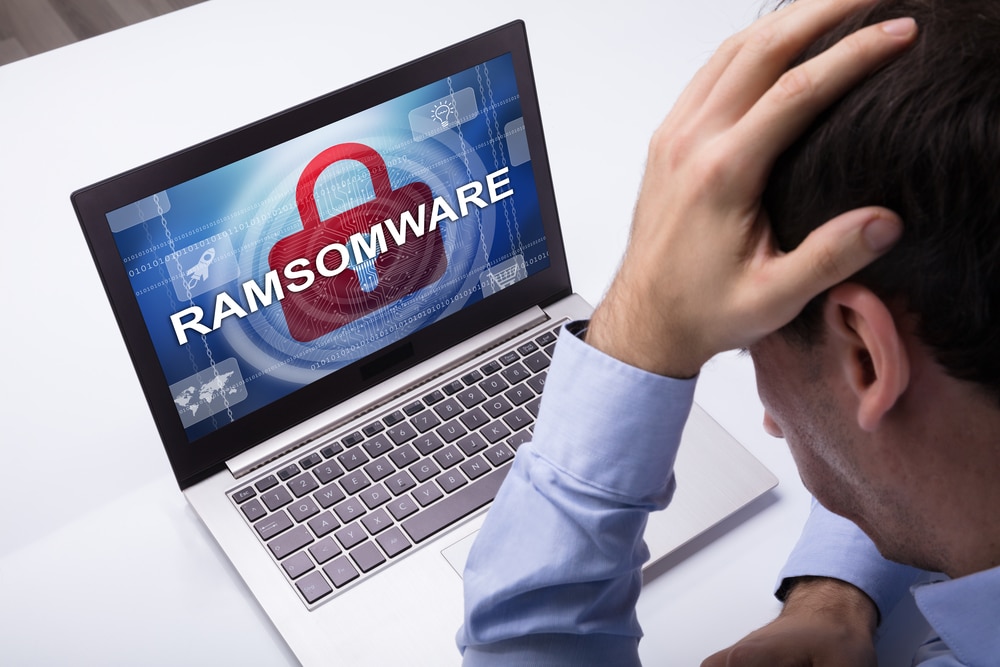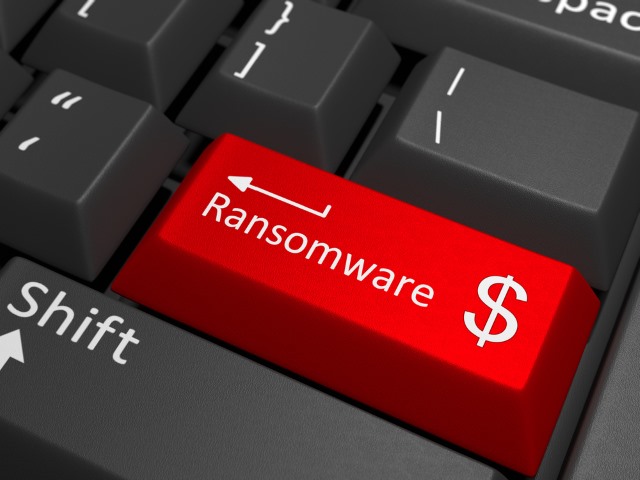
Critical infrastructure organizations the target of more than half of ransomware attacks
Critical infrastructure organizations accounted for 51 percent of ransomware victims in 2022, with construction being the most targeted sector overall.
Analysis by the KrakenLabs team at Outpost24 has identified 2,363 victims disclosed by various ransomware groups on Data Leak Sites (DLS) in 2022, with an estimated $450 million paid in ransom by victims.

Ransomware affects every aspect of your organization -- here's how to keep your business-critical applications safe
Cybersecurity continues to be an increasingly complex landscape for businesses to navigate as cybercriminals become more sophisticated and the frequency of attempted attacks grows at a rapid pace. One of the biggest cybersecurity challenges that businesses have to contend with today is ransomware, which has become the biggest global cyber threat as attacks strike fast and can do massive damage.
We particularly saw the rapid rise of the ransomware threat during the period of the Covid-19 pandemic, a time when most organizations and industries were increasingly adopting new technologies to help adapt to a new, remote environment characterized by digital transformation. According to the latest ransomware statistics, more than a third of organizations across the globe suffered an attempted ransomware attack in 2021, an increase of 105 percent -- to 623.3 million ransomware attacks -- compared to 2020. And, while the volume of ransomware attacks fell by 23 percent in 2022, as organizations began to more aggressively respond to cyber threats, attack methods are continuously evolving at the same time that average ransomware demands are dramatically increasing.

Ransomware groups rebrand and claim more victims
The latest report from the GuidePoint Research and Intelligence Team (GRIT) shows an increase in ransomware activity from Q3 2022 to Q4 2022, as rebranded ransomware groups significantly increased the number of publicly claimed victims.
No quarter of last year saw less than 569 total victims -- with the biggest lull occurring in late June and early July, most likely attributed to the shift from Lockbit2 to Lockbit3, although challenges in the crypto currency market may have also had an impact.

Organizations not prepared for cyberwarfare
According to a new study, 33 percent of global organizations are not taking the threat of cyberwarfare seriously.
The report, from asset visibility and security company Armis, is based on a survey of over 6,000 IT and security professionals around the world and finds 24 percent feel under prepared to handle cyberwarfare. Indeed, the lowest-ranking security element in the eyes of IT professionals is preventing nation-state attacks (22 percent).

Ransomware: The greatest threat to state and local governments today
Historically, government organizations have faced fewer attacks than their peers in other industries, particularly education and healthcare. But state and local governments have become a popular target for bad actors over the last two years -- nearly half of all ransomware in 2020 targeted municipalities. And in 2021, almost 60 percent of state and local governments faced a ransomware attack, up from just one-third of government organizations the year before.
The trend toward more frequent government ransomware attacks is concerning for several reasons. First and foremost, governments provide constituents with critical, everyday infrastructure, which makes ransomware-related outages costly and damaging. This incentivizes government IT leaders to address ransomware breaches quickly by paying the ransom. Second, and equally important, many state and local governments continue to use legacy hardware for their IT infrastructure. Without cloud-based protections and modernized cybersecurity protocols, many state and local governments face an uphill battle when it comes to addressing ransomware.

Attacks and payments are down -- but don't write off ransomware yet
A quarter of US organizations were victims of ransomware attacks over the past 12 months, a steep 61 percent decline over the previous year when 64 percent fell victim.
In addition a new report from Delinea finds that the number of targeted companies who paid the ransom declined from 82 percent to 68 percent, which could be a sign that warnings and recommendations from the FBI to not pay ransoms are being heeded.

The age-old question in 2023: How to deal with ransomware?
It has been a devastating year for organizations in the fight against ransomware, with the news this year being a revolving door of ransomware breaches. Research by Zscaler revealed that there had been an 80 percent increase in ransomware attacks year-over-year.
It’s not just an increase in the number of ransomware attacks but also the catastrophic impact they can have on businesses, employees, customers and the wider popular itself. Shockingly, the average cost of a ransomware attack is $4.54 million, and destructive attacks can increase this cost by over $430,000. So, as 2023 quickly approaches, what ransomware threats should we expect?

Paying ransomware is financing crime -- how organizations can break the cycle
Ransomware attacks have dominated the headlines over the last two years and will continue to control the cybersecurity agenda going into 2023. While ransomware gangs continue to be successful in extorting money from businesses, those that do pay demands are financing the ransomware industry and further crime.
With increasing attacks on areas like critical infrastructure and healthcare, it’s now become more than just a business issue. So how did we get here, what are the implications beyond the business world, and what do organizations need to do to break the cycle?

Protecting backups from ransomware [Q&A]
Cybercriminals know that backups are the last line of defense against ransomware, so it’s essential that they are properly protected.
In an ideal world they would be air-gapped but in the current era of hyperconnectivity that can prove somewhat impractical. We talked to Bret Piatt, CEO of CyberFortress, to discuss the need to protect backups and the strategies for doing so.

Fraud and ransomware dominate cyber insurance claims
Ransomware accounts for 23 percent of cyber insurance claims, while while fraudulent funds transfer (FFT) accounts for 28 percent according to insurance specialist Corvus, which has released its latest Risk Insights Index.
The impact and consistency of FFT is growing, accounting for 36 percent of all claims in the last quarter (Q3 2022), an all-time high. Indeed this metric has not dropped below 25 percent for the past six quarters.

Cyber extortion dominates the threat landscape
Cyber extortion is impacting businesses of all sizes across the world, and 82 percent of observed are small businesses, an increase from 78 percent last year.
The latest Security Navigator report from Orange Cyberdefense shows a marked slow-down in cybercrime at the onset of the Ukraine war, but intensity soon increasing again.

It's time for better data protection: Why the 3-2-1 rule isn't enough
With reports showing that 90 percent of organizations were impacted by ransomware over the past twelve months, policies ensuring that data is both safeguarded and recoverable have become a necessity rather than an option.
However, changes to the data security landscape in the intervening years since methods such as the 3-2-1 backup rule were first adopted means these approaches may no longer be fit for purpose when it comes to mitigating against data loss.

Companies caught off guard by holiday and weekend ransomware attacks
Ransomware attackers are exploiting the fact that organizations have fewer security staff available at weekends and holiday times in order to launch more devastating attacks.
A new report from Cybereason shows 44 percent of companies reduce security staffing over holidays and weekends by as much as 70 percent compared to weekday levels. 21 percent reduce staff by as much as 90 percent.

60 percent of SMBs are not confident of fending off a ransomware attack
Smaller businesses are an attractive target for attackers since they often don't have the same security resources as larger organizations.
A new report from OpenText Security Solutions, based on a survey of over 1,300 security and IT professionals at SMBs, reveals 84 percent are concerned about a ransomware attack impacting their business and 60 percent are not confident they can fend off such an attack.

New gangs and new tactics mean more victims of ransomware
Ransomware actors have been forming affiliate gangs and using new tactics in order to lure additional victims, according to a new report.
The latest 2022 Bi-Annual Cyber Threat Report from Deep Instinct reveals changes in the world of ransomware gangs, including LockBit, Hive, BlackCat, and Conti.
